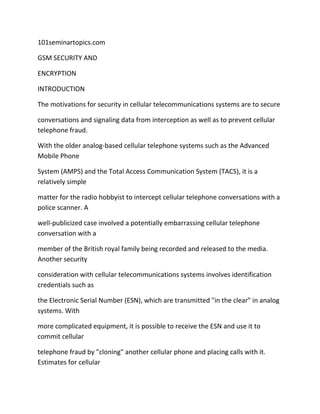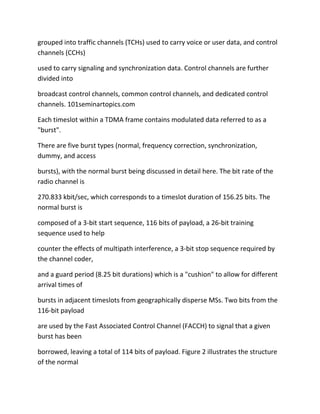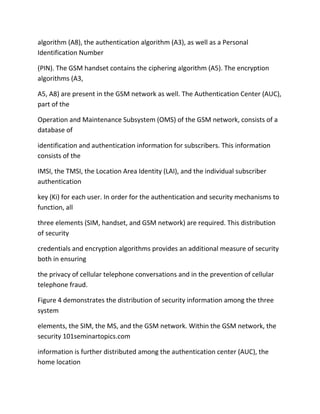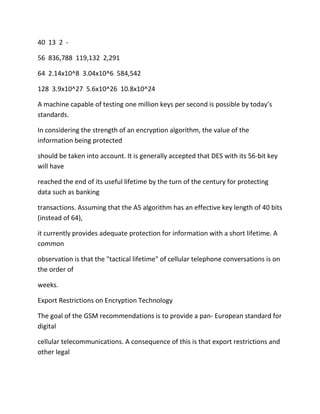The document discusses security features in GSM cellular networks. It describes how older analog cellular systems had security vulnerabilities like the ability to intercept calls and clone phones. GSM introduced digital encryption to protect calls and authentication to verify subscribers' identities securely. The document outlines GSM's use of encryption algorithms, authentication protocols, and temporary IDs to secure communications and prevent fraud while maintaining users' privacy.





























